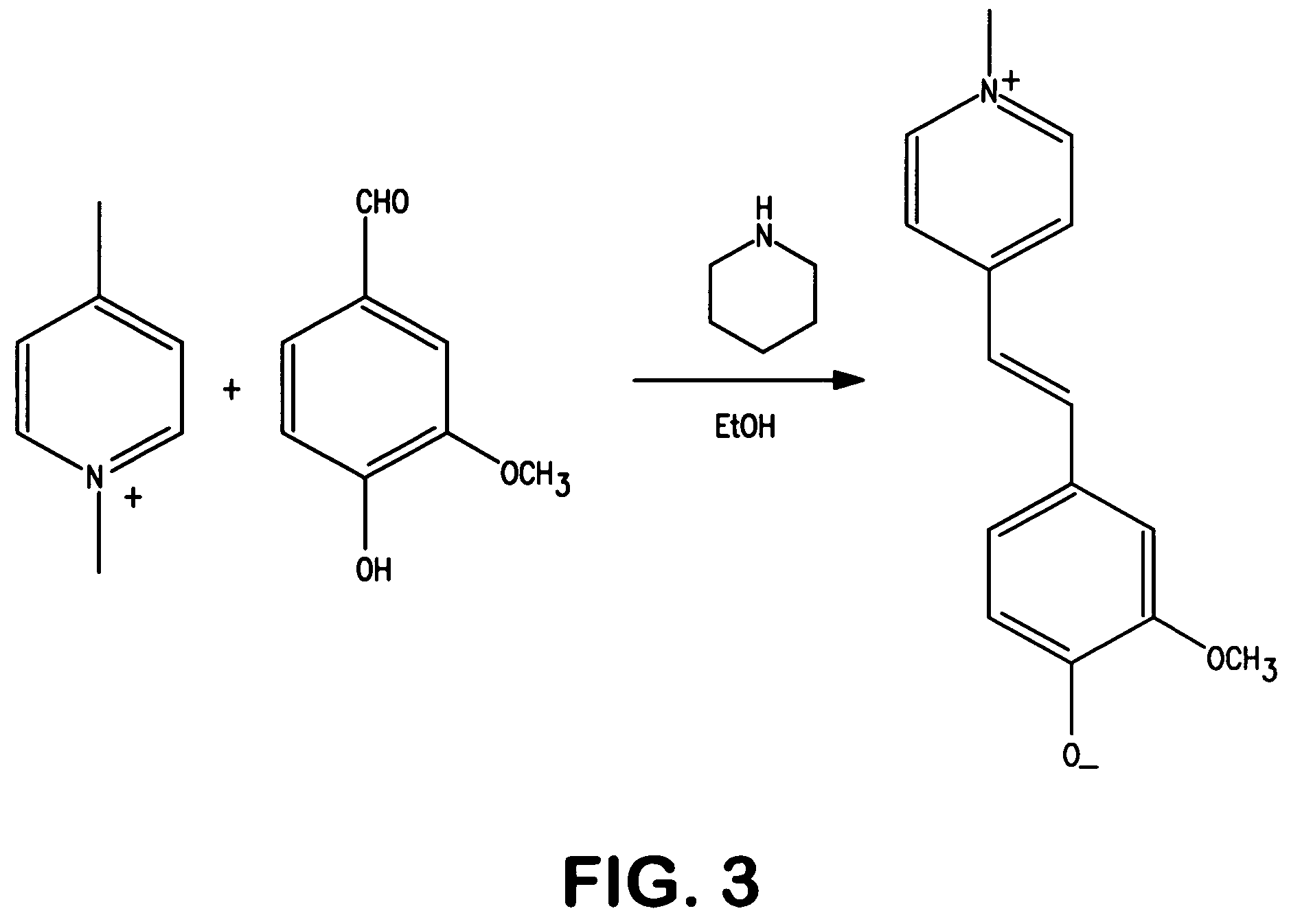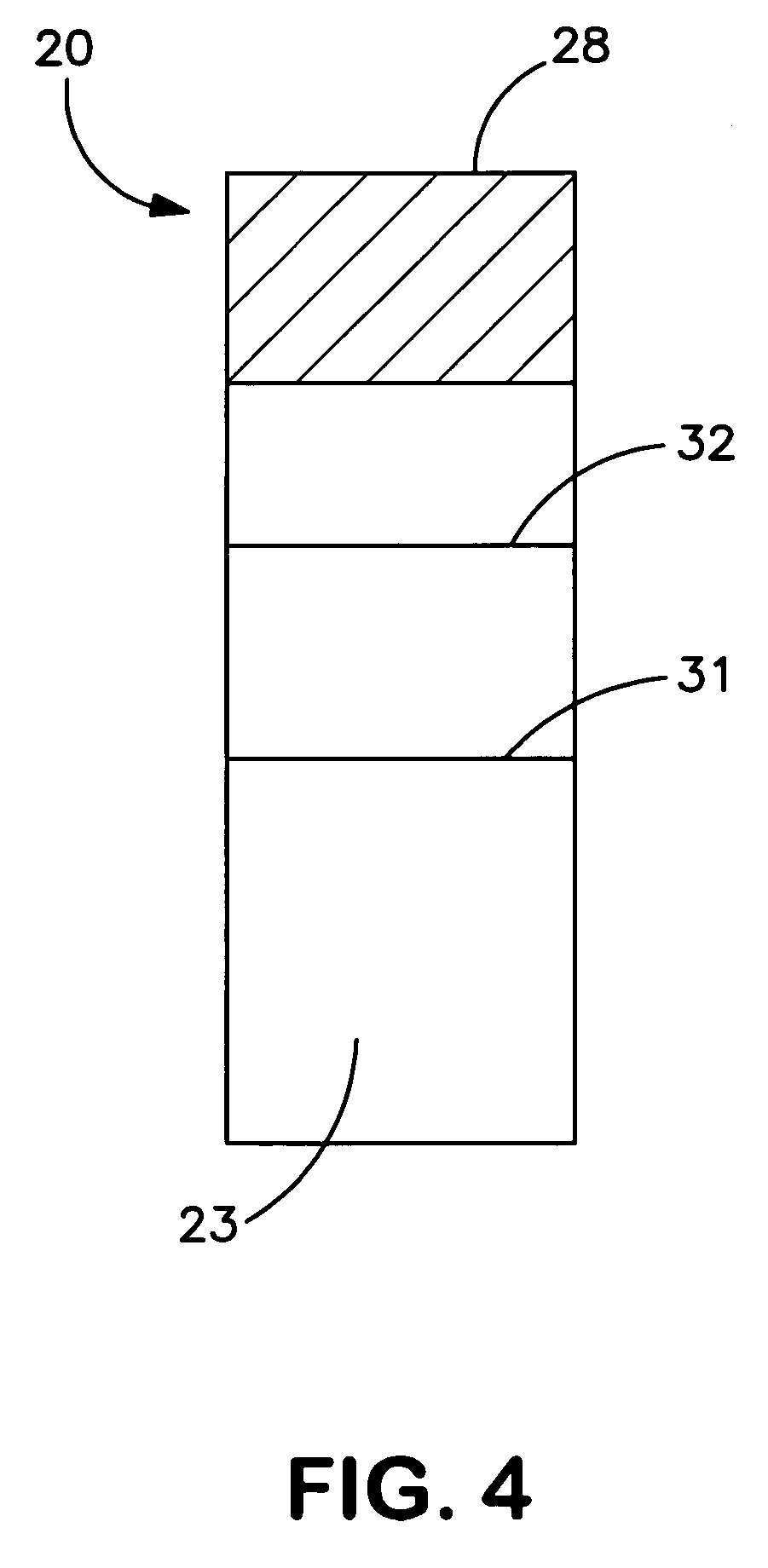Method for screening for bacterial conjunctivitis
a conjunctivitis and conjunctivitis technology, applied in the field of bacterial conjunctivitis screening, can solve the problems of antibiotic drops prescription, unreliable diagnostic techniques,
- Summary
- Abstract
- Description
- Claims
- Application Information
AI Technical Summary
Benefits of technology
Problems solved by technology
Method used
Image
Examples
example 1
[0079]The ability to form merocyanine dyes for use in the present invention was demonstrated. For example, the merocyanine dye shown in FIG. 1 was synthesized in the laboratory using a two-step reaction. Specifically, as shown in FIG. 2, methyl iodide was added slowly to a stirred solution of δ-picoline in 50 milliliters of isopropanol in an ice bath. After addition was complete, the reaction was heated to reflux and reflux continued for 2 hours. The solution was then chilled in an ice-bath and the precipitate filtered, and washed with chilled alcohol, on a Buchner funnel. The powder was then dried in the fume-hood for 2 hours. Yield of crude product was 18.6 grams. The crude product was not further purified and used directly for the next step. N-methyl-δ-Picolone (9.4 grams, 0.04 moles), and vanillin (6.1 grams, 0.04 moles) were all dissolved into 50 milliliters of ethanol with stirring as shown in FIG. 3. To this solution was added piperidine (3.4 grams, 0.04 mole) and the mixture...
example 2
[0082]Adenovirus type 2 pool (ATCC No. VR-846) was propagated in Vero monkey kidney cells and fed with Dulbecco's Modified Eagle's Medium (DMEM), supplemented with fetal calf serum to a concentration of 5% and incubated at 37° C.±1° C. in its presence of 5% CO2 for 6 days. Viral propagation was detected by microscopic observation of infected cell sheets for cellular disintegration (cytopathic effect, CPE) such as rounding, crenation, lysis, pyknosis, etc. as observed in at least 50% of the cell sheet. Cytotoxicity was measured as the extent of cellular disintegration as produced by the agent alone without the virus. Virus was titrated using ten-fold serial dilutions in DMEM, 4 replicates MA 104 cultures per dilution, each replicate inoculated with 0.1 milliliter of virus dilution. The extent of viral replication was calculated as the tissue culture infectious dose-50% (TCID 50) as determined by the method of Reed and Muench. The virus titer was calculated to be 10−6.5.
[0083]Haemophi...
example 3
[0085]A cellulosic towel was used as a substrate onto which P. aeruginosa was pipetted onto the towel (100 μl). Reichardt's dye solution (160 mg in 10 ml of acetonitrile) was then added in 10 μl aliquots to the spot and the numbers of drops needed to establish a persistent color were counted. The amount of dye required to maintain a persistent purple color was 80 microliters.
PUM
| Property | Measurement | Unit |
|---|---|---|
| wavelength range | aaaaa | aaaaa |
| wavelength range | aaaaa | aaaaa |
| concentration | aaaaa | aaaaa |
Abstract
Description
Claims
Application Information
 Login to View More
Login to View More - R&D
- Intellectual Property
- Life Sciences
- Materials
- Tech Scout
- Unparalleled Data Quality
- Higher Quality Content
- 60% Fewer Hallucinations
Browse by: Latest US Patents, China's latest patents, Technical Efficacy Thesaurus, Application Domain, Technology Topic, Popular Technical Reports.
© 2025 PatSnap. All rights reserved.Legal|Privacy policy|Modern Slavery Act Transparency Statement|Sitemap|About US| Contact US: help@patsnap.com



